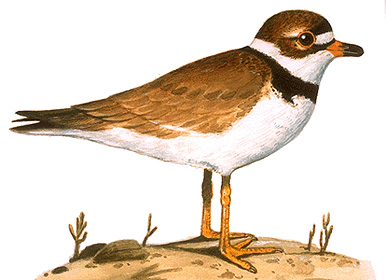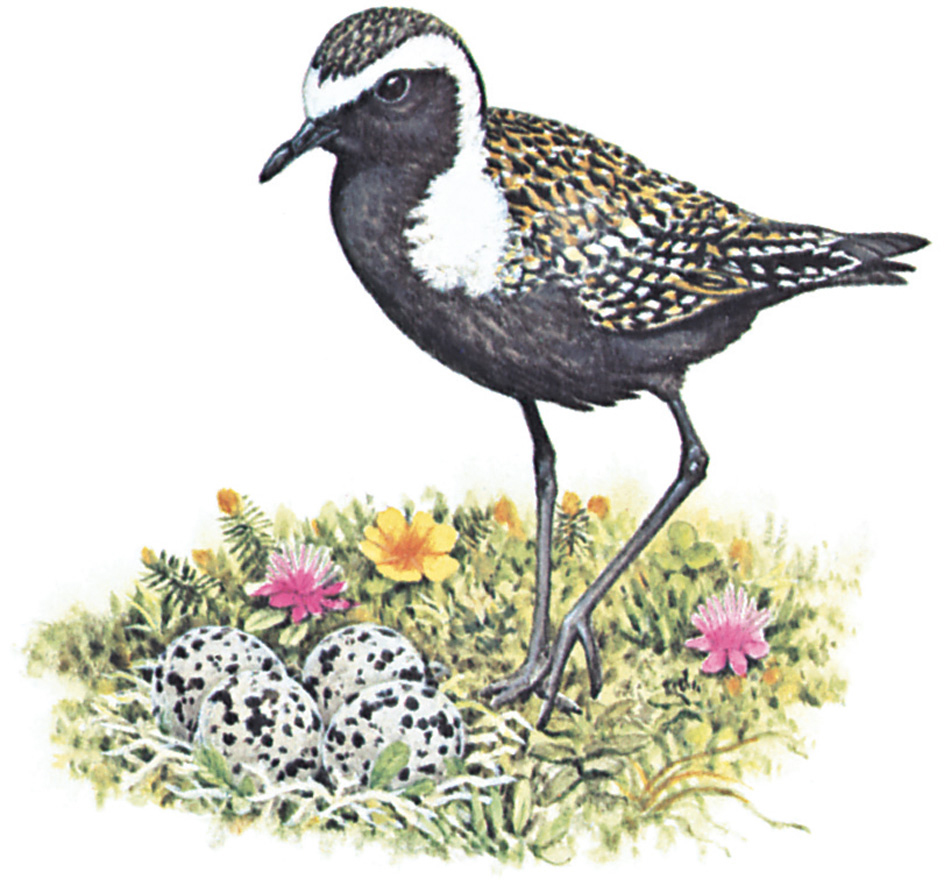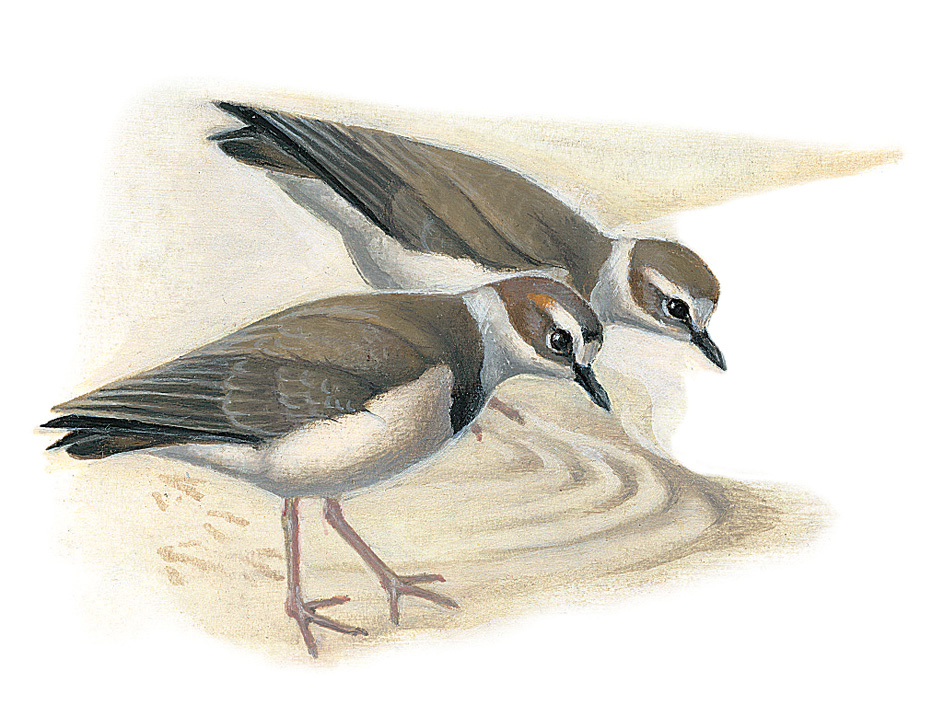Plover << PLUHV uhr or PLOH vuhr >> is a group of shorebirds found throughout the world. Plovers measure from 6 to 16 inches (15 to 41 centimeters) in length. They may be many colors, and the feathers are usually marked in various patterns. The head and neck often have dark markings. The wings are pointed and reach beyond the end of the tail. There are dozens of species (kinds).

Semipalmated plover
A plover has a short, thick neck and a short bill. Unlike most other shorebirds, plovers secure their food from the surface of the ground rather than by probing. Their food includes such animals as crabs, insects, and worms. They also eat berries.
Plovers build their nests on the ground. The female plover usually lays four eggs. The spotted eggs are difficult to distinguish from pebbles around them. Feathers of newly hatched chicks are also marked with dark spots.
Loading the player...Lesser golden-plover
Several species of plovers live in North America. Two common species, the black-bellied plover and the American golden plover, nest in Arctic Alaska and Canada. The black-bellied plover has black and white feathers and a black breast and throat. Feathers of the American Golden Plover are black and gold. This bird migrates as far as South America in winter.

The semipalmated plover, or ring-necked plover, also nests in Alaska and Canada. It has a dark back, a white breast, and a black band across its neck. It winters as far south as central Chile and Argentina. Other common North American plovers include the snowy plover, the Wilson’s plover, the mountain plover, and the killdeer. The piping plover was once common on the Atlantic and Gulf coasts and along the Great Lakes. Only about 8,000 piping plovers remain.

Wilson's plover
See also Bird (Birds of the seacoasts); Killdeer.
